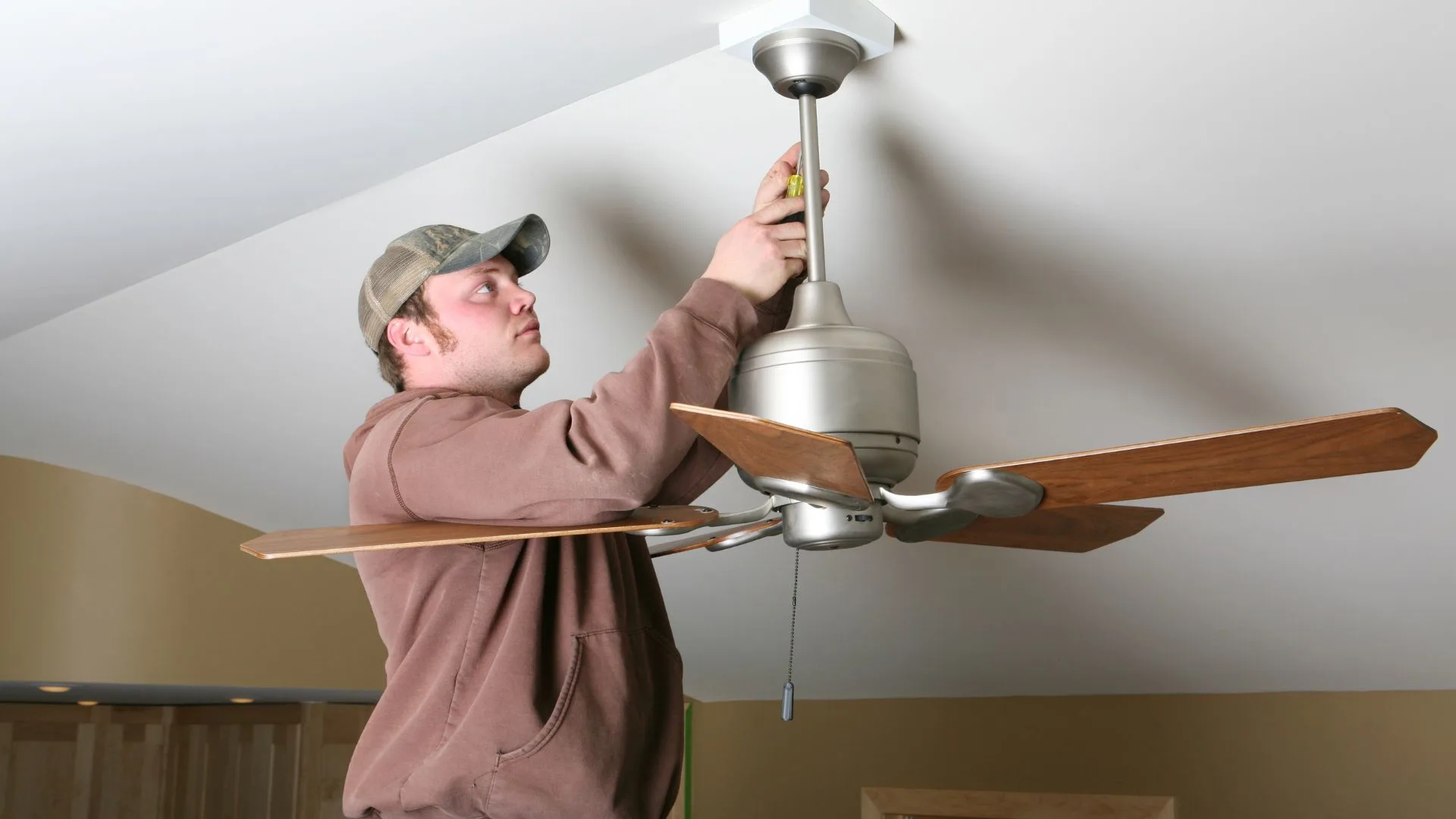Ceiling fans are one of the most used appliances in Indian households and businesses. From cooling rooms during summer to circulating warm air in winter, they play a big role in comfort and energy efficiency. But like every appliance, ceiling fans have a lifespan. Many homeowners often wonder: how often should a ceiling fan be replaced?
The answer depends on factors like usage, maintenance, quality, and the type of fan you own. Let’s break it down so you know exactly when it’s time to replace your ceiling fan.
Average Lifespan of a Ceiling Fan
On average, a well-maintained ceiling fan can last 8 to 10 years. High-quality fans from trusted manufacturers may even last 12 to 15 years if maintained properly. However, cheaper or poorly maintained fans may need replacement in as little as 5 years.
Key Signs It’s Time to Replace Your Ceiling Fan
Instead of waiting for the fan to completely stop working, you can look for early signs that indicate it’s time for a replacement:
- Excessive Noise: If your fan makes rattling, humming, or squeaking sounds even after tightening screws and cleaning, it may be wearing out.
- Wobbling Blades: Persistent wobbling despite balancing the blades indicates motor or structural issues.
- Reduced Airflow: When the fan no longer circulates air as effectively, it could mean the motor is losing efficiency.
- Frequent Repairs: If you find yourself fixing the fan every few months, replacement is more cost-effective.
- Old Design & Features: Older fans lack modern energy-saving technology, remote control functions, and stylish designs. Upgrading improves both efficiency and aesthetics.
Factors That Affect Ceiling Fan Lifespan
Not all ceiling fans age the same way. Their longevity depends on several factors:
- Quality of the Fan: Premium fans from a reliable brand last much longer than cheap alternatives.
- Usage Frequency: Fans used daily for long hours wear out faster than those used occasionally.
- Environment: Fans in humid or coastal areas may rust or corrode faster.
- Maintenance: Regular cleaning of blades, oiling (if required), and tightening screws extend the lifespan.
- Installation Quality: Poor installation can strain the motor and reduce durability.
Should You Repair or Replace a Ceiling Fan?
A common question is whether it’s better to repair or replace an old ceiling fan. Here’s a quick guide:
- Repair if: the issue is minor (loose screws, dirty motor, capacitor replacement).
- Replace if: the fan is over 8 years old, makes constant noise, or consumes more power compared to modern energy-efficient fans.
In most cases, replacing an outdated fan saves money on electricity bills in the long run.
Benefits of Replacing an Old Ceiling Fan
Upgrading to a new ceiling fan isn’t just about solving problems—it comes with several benefits:
- Energy Efficiency: Modern fans use advanced BLDC motors that consume up to 65% less electricity.
- Better Comfort: Improved blade design ensures stronger airflow with quieter performance.
- Smart Features: Remote control, app connectivity, and speed adjustment features add convenience.
- Stylish Designs: Modern fans enhance home décor while providing functionality.
- Lower Maintenance: Newer models are designed for longer durability and hassle-free operation.
Old Ceiling Fan vs. New Ceiling Fan – A Quick Comparison
| Feature | Old Ceiling Fan (8+ Years) | New Ceiling Fan (Modern Models) |
|---|---|---|
| Energy Efficiency | Consumes 70–90 watts per hour | BLDC models consume 25–35 watts per hour |
| Noise Level | Often noisy due to wear & tear | Silent operation with improved motors |
| Airflow | Reduced over time | Stronger and more consistent airflow |
| Design | Outdated, bulky | Sleek, stylish, matches interiors |
| Maintenance | Requires frequent servicing | Low maintenance, durable build |
| Features | Basic pull-chain or switch | Remote control, smart connectivity |
This comparison shows how much value a modern ceiling fan brings in terms of savings, comfort, and style.
How to Extend the Life of Your Ceiling Fan
If you’ve recently purchased a new fan, these practices will help you maximize its lifespan:
- Clean the blades regularly to prevent dust buildup.
- Lubricate the motor if the manufacturer recommends it.
- Ensure proper installation with balanced blades.
- Use the right speed settings—avoid running the fan at maximum speed constantly.
- Turn it off when not in use to reduce wear.
So, How Often Should a Ceiling Fan Be Replaced?
To summarize:
- Standard lifespan: 8–10 years.
- High-quality, well-maintained fans: 12–15 years.
- Replacement is recommended earlier if you notice wobbling, excessive noise, reduced airflow, or outdated features.
Instead of waiting for a complete breakdown, it’s smarter to replace your ceiling fan when efficiency drops or maintenance costs keep increasing.
Why Choose Jivah?
If you are planning to replace your old ceiling fan, choosing the right ceiling fan manufacturer makes all the difference. Jivah is a trusted name known for blending durability, energy efficiency, and modern design. Our fans are built with advanced BLDC technology, designed for longer life, and crafted to complement your interiors.
With Jivah, you don’t just get a ceiling fan—you invest in comfort, style, and long-term savings.
👉 Looking to upgrade? Explore Jivah’s range of premium ceiling fans and bring home unmatched performance today.

